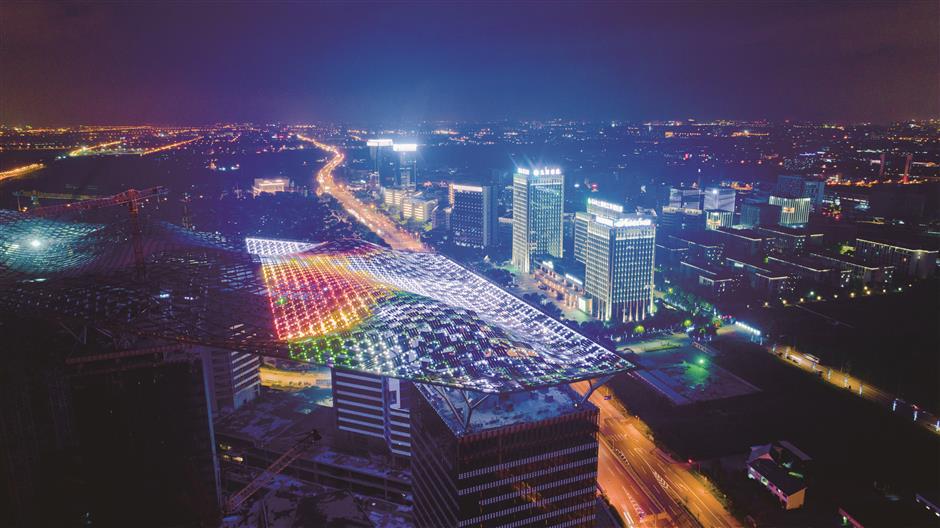New bank policies improve finance for G60

A night view of the G60 High-tech Cloud Complex, or the Raphael Complex, shows the grand architecture radiant in rainbow colors. The complex, once completed, will extend 1.5 kilometers and comprise of 23 high-rise office buildings, and is expected to be the longest urban industrial complex in the world.
Policies to offer financial support for advanced manufacturing industries along the G60 High-tech Corridor were enacted by the People’s Bank of China’s Shanghai headquarters recently.
The policies mainly concern artificial intelligence, integrated circuits, biomedicine, advanced equipment, new energy, new material and new-energy vehicles.
Through improving financial services, optimizing allocation and raising levels of innovation, the policies aim to connect financial institutes with innovation industries, market reality with enterprises’ growth, financial supply with national innovation strategies and financial innovation measures with market needs.
“The new policies achieved great breakthroughs. For example, they offer intellectual property loans to innovation enterprises that are usually asset-light, and provide supply chain finance services to manufacturing enterprises that are usually asset-heavy. The policies are practical in that they cater to different enterprises with different scale and in different development phases,” said Zhang Wei, deputy manager of Wuhu Efort Intelligent Equipment Co.
“Since our company is preparing for a listing and is feeling the difficulty and pressure of financing, the policies will help us reduce financing cost, save time and spend more efforts on research and development,” said Liu Zijiao, market manager of Shanghai CnTech Co.
Songjiang launched the 1.0 version of G60 development in the district in 2016 by focusing on innovation, industrial reconstruction, investing in advanced manufacturing industry and exerting regional leadership.
In 2017, it launched a 2.0 version by cooperating with governments from Hangzhou and Jiaxing.
The 3.0 version launched in 2018 saw the region expand along the Shanghai-Suzhou-Huzhou-Hefei Intercity Railway to include Suzhou, Huzhou, Xuancheng, Wuhu and Hefei.
In 2019 the corridor vision became an essential part of the Yangtze River Delta region integrated development strategy.
















